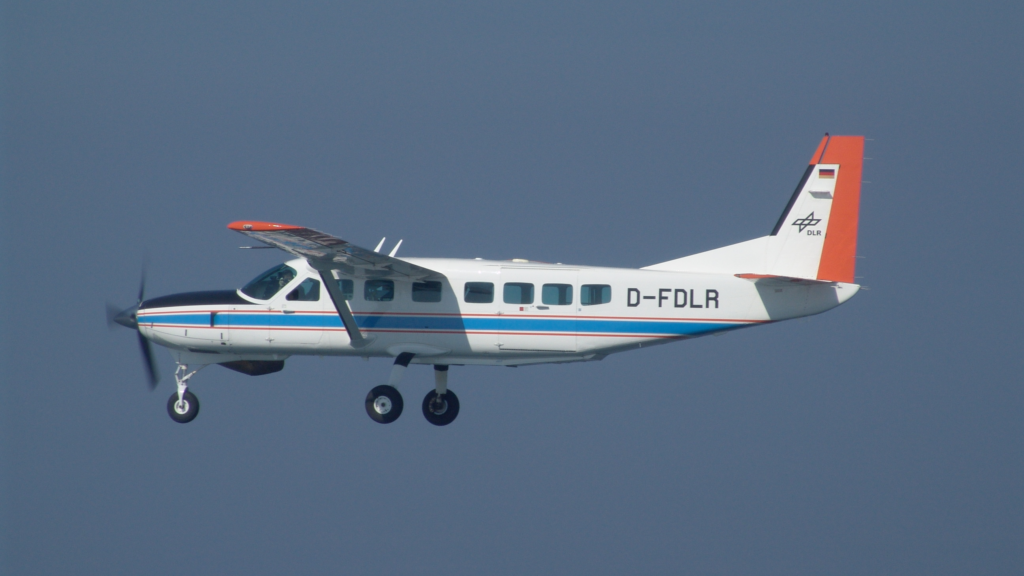Remote sensing, atmospheric research and ‘flying auditorium’
The DLR research aircraft Cessna 208 B Grand Caravan is used for remote sensing and atmospheric research and is particularly suitable for camera flights. During flights with the 3K camera system, for example, high-resolution aerial images are acquired for a variety of applications in traffic management or disaster response. Using a laser measurement system (lidar), researchers on board the research aircraft can measure the concentration of trace gases such as ozone over a wide area.
In 2006, the aircraft was converted into DLR’s ‘flying auditorium’. This is used for the extended training of aeronautical engineers, meteorologists and aviation personnel. The following are available for this purpose: customised flight projects for optimum learning content, seven measuring stations for the young researchers with monitor and intercom, Quicklook for real-time visualisation of the measured and calculated parameters, force sensor on the control horn, rudder position sensor and full HD front camera.
In the practical flight course for aerospace students, the performance data of the aircraft is determined in flight in various test units together with a flight test engineer; including climb performance, glide performance, manoeuvre stability (manoeuvre point), longitudinal stability (neutral point), phygoids (natural oscillations), tumble oscillation and stall behaviour.
In addition, meteorology students can measure small-scale meteorological phenomena on board the Cessna in a flight lab, which can also be experienced in the Quicklook display: Boundary layer structure, turbulence, foehn wind wave, valley wind.
Links:
German Aerospace Center (DLR)
Flight Experiments
E-Mail contact-dlr@DLR.de

